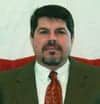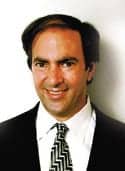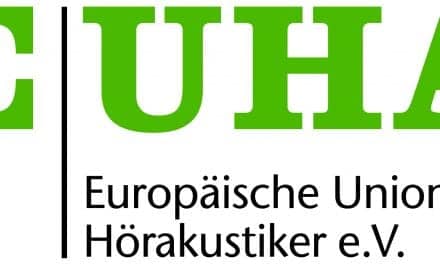EAR Inc president and founder, Garry Gordon, is leading the campaign for hearing health care and awareness in the recreational market.
As the hearing instrument market continues to soften, audiologists and dispensers will have to actively find different ways to attract new customers. One way, says Garry Gordon, president of EAR Inc, Boulder, Colo, is to look beyond the hearing aid market and focus on hearing protection, specifically the virtually untapped recreation market, which ranges from activities such as shooting to motorcycling to flying. “These markets are enormous and require a clear understanding of the sport and types of product lines that will work,” says Gordon. “For example, motorcyclists appreciate filtered ear protection or sports monitors that can hook into radio and telephone communications. Shooters and hunters like custom electronic or nonelectric ear defenders. Product lines vary. The great thing about all these activities is the fact several of the participants have serious hearing deficiencies that also require hearing aids.”

Coining the term recreational audiology more than a decade ago, Gordon has been a crusader of sorts. But he found his initial push somewhat thwarted by the arrival of high-priced digital hearing instruments—a potentially more lucrative item compared to the low-priced, low-tech earmolds that EAR Inc and others in the conservation market were providing.

This is changing with some audiologists and dispensers, either through conscious effort or fortuitous circumstance, discovering that recreational audiology not only makes good business sense, but good sense for their professional and personal lives. “It’s a fun market,” says Gordon. “It’s fun to have products that people come to you and say ‘do you have these, how do I get them?’ versus trying to give them a sales pitch.”

In many ways, recreational audiology is the profession’s best-kept and potentially most-lucrative secret.
Recreational Audiology Now
After developing the concept of recreational audiology, Gordon worked with the Academy of Dispensing Audiologists (ADA) to create a formal definition for this subcategory of hearing protection. According to the ADA, recreational audiology is “the practice of hearing conservation and consumer education regarding products and services used to enhance and preserve hearing occupations and environments that may not be regulated by governmental agencies.”

The types of hearing protection in recreational audiology includes custom earmolds, electronic earplugs, ear monitors, filtered ear plugs, and radio communications.
There are obvious business advantages to tapping into the recreational hearing market. “By participating in these markets each provider will make contact with consumers needing their expertise and products,” says Gordon. “For example, the hunting and shooting sports [market] has more than 60 million participants. Every one [of them] needs ear protection and approximately 47% will admit to a noticeable hearing loss. A very large percentage of these people are also seeking hearing aids.”

But there are more fundamental, philosophical reasons why an audiologist or dispenser would want to enter the market. For Lesley Ericsson, AuD, an audiologist and co-owner of Audiology Professionals, Sarasota, Fla, recreational audiology is simply a way to help more people before they lose their hearing. “One of the concerns among hearing aid dispensers, audiologists, and everyone involved in the hearing rehabilitation field is how to grow the hearing aid market,” she says. “Why is it stuck at only 20% of the people that we believe could use hearing aids? I think some of it is that we are limiting ourselves to solving people’s listening needs only after they have a certain level of disability. Why shouldn’t we be relevant to those people much, much earlier at the point where we are providing them with things that are fun? How can we make what they need fun stuff for their ears? How can make getting it fun? How can we make owning it fun? I think part of that is to start with recreational products, and then they automatically know where they are going to come when they need the rehabilitative products.”

Ericsson’s recreational patients tend to be in their 40s and 50s. Getting the patients earlier allows Ericsson and business partner Susan de Bondt, AuD, an audiologist, the ability to get a baseline of the patient’s hearing, which then can be monitored over the long term. Developing a long-term relationship with patients before they need a hearing instrument is another advantage to entering the recreational market. “We’re very interested in not just marketing hearing aids to the people who need them today,” she says. “We’re very interested in making sure that we will have a market next year and tomorrow and 5 years from now. Studies often show that people wait 5 to 7 years from when they first notice hearing problems to when they act on them. It’s important that when they are ready to act they already have a relationship with you. So it’s all part of building a relationship. We see this as nurturing future markets. With luck those future markets will continue to be recreational.”

Nuturing Relationships
The Colorado Hearing Center, Longmont, Colo, has been nurturing these long-term relationships since 1978, when it first entered the recreational hearing market. The reason the Colorado Hearing Center entered the practice was more or less philosophical than practical—its patients demanded it. “What we saw was that we had a lot of recreational people—like people who did hunting, people who were around loud boats and snowmobiles, and a lot of musicians—coming to us at younger ages in need of hearing aids, because they had already really badly hurt their hearing by noise exposure,” says Kay Carr, office manager for the center. “We thought, ‘Well we need to look into hearing protection.’ Colorado is a hunting and shooting state, so we have a lot of hunting and a lot of recreational shooting here. And so we looked into our different venues … so we thought it made much more sense to protect the hearing before it’s damaged.”

Though the initial demand came from customers, Carr says that not every potential patient is open to the idea of hearing protection. “You would still be surprised at the tough outdoor types that decide that when they go out hunting they don’t want to wear protection, because it’s not a guy thing to do,” she says.
While most hearing instruments today range into the thousands of dollars, hearing protection is definitely a small ticket item. Carr notes that a basic EAR Inc Instamold can cost as little as $50. There are also more sophisticated devices they provide. “We go all the way up to [devices] that are like little hearing aids in your ear, and they let you hear sounds—conversations—but the minute a gun goes off or a huge band noise hits a certain decibel, in a split second, you’re protected,” she says. “What it amounts to is depending on the needed protection, we have all levels of protection devices.” She adds that the recreational segment of the practice is a large percentage of the business.
For Ericsson, recreational audiology only makes up a very small percentage of her business. “Right now, monetarily I’d say it’s a very small part—as far as what people write the checks out for—it might only be 5% to 10%,” she says. “However, our overhead on these is minimal compared to our overhead on hearing aids. First of all you don’t have people coming in and returning them after 30 days. You seldom see anybody more than once or twice. These are people who are very cognitively intact. They’re bright. They’re young. The majority of them do not have difficulty with decreased vision, decreased mobility, decreased ability to manage things. They’re able to understand quickly what you say. They have a quick intuitive ability to grasp what you’re doing with these devices. You do not have a lot of counseling and follow up. It’s very simple.”

The recreational market also has another benefit. It has enhanced Ericsson’s life. “It’s emotionally very rewarding,” she says. “One of the other things that happens when you’re dealing with a population that uses hearing aids that is hearing impaired, and maybe visually impaired, and maybe cognitively impaired that it can lead to a lot of professional burn out, if that’s all you see all the time. And you don’t have a sense that you’re really making much of an impact. It’s so wonderful to also have kind of a fun positive part of your practice.”
For Carr and her colleagues at the Colorado Hearing Center, the impact and need for recreational audiology became apparent when they traveled to a motorcycle rally in Sturgis, SD, 2 years ago, at the suggestion of a motorcyclist patient. “We were so busy from the minute we set up, which, to me, means that recreational people are very aware of their medical situations, and, of course their need to protect their hearing,” she says. “The minute we opened up our booth, we were busy. We were delighted by that kind of response, we had no idea.”
Gordon filled in for Carr last year, and had a similar experience, with the motocyclists literally lining up outside the door. There is obviously a market for recreational audiology, but the toughest part of dispensing to that market is not, as Gordon notes, making a hard sales pitch, but breaking into it.
Creating the Market
There are several ways to break into the recreational market, these include advertising in specialty magazines, for instance, ones covering shooting sports, and attending trade shows. Gordon says that the Internet is invaluable in finding groups and magazines that may be of interest for the recreational market. “The best way to get the word out is to attend different events, learn about the different product lines, do seminars at trade shows, and provide on-site hearing tests, if possible,” says Gordon.
While Gordon is trying to change the whole industry, Carr and Ericsson are focused on their corners of it. Carr says that Colorado Hearing Center advertises weekly in its local paper and sends out targeted mailers. The practice also participates in local civic organizations. There is one other resource that’s even bigger. “We’ve been here a long time, and so we know a lot of people, and everybody’s familiar with us, so, to me, word of mouth is the biggest,” she says.
Ericsson has promoted recreational audiology at local skeet shooting events, but admits that most of her recreational patients have found her practice either on their own or through referrals.
Gordon says that one of the things that helped EAR Inc break into the European market was working with several high profile Olympic athletes. “When we’re [at events], several cameras show the stars from all these different countries in action, many of them wearing our products,” he says. “When those pictures are published in magazines throughout the other countries, we [have a new base of customers]. In other words, by working with high-profile people that will give the exposure, the consumer will say ‘how do I go about getting them’—and then it’s an easier sale.”
Though Gordon thinks much of the onus for marketing and spreading the word is with the dispenser and audiologist, he also points to manufacturers—such as himself—as key players in making recreational audiology an everyday part of the hearing market.
Manufacturers’ Role
Gordon says that when the concept of recreational audiology was first developed in the early 1990s, there were hearing instrument companies, most notably Starkey, that began creating hearing protection devices around the time he coined the phrase. “My concept was that the manufacturers that will pull in the different ear protection systems are going to be able to attack the market very, very aggressively, and from it they will also get more hearing aid sales,” he says. “From that we have seen some of the hearing aid manufacturers are beginning to take a look at what they can produce electronically in the field for the consumer market, and also do earmolds and ear impressions for ear protection.”
Unlike Starkey, not every hearing instrument manufacturer has supported the recreational concept. This has opened up some new avenues for the ear mold companies. “[Companies like] Earmold Design and Precision Laboratories are adding hearing aids to their line,” says Gordon. “There is some preparation going on to create products for the market. Where part of the problem is going to occur is that are they going to be product oriented and just create the product or are they going to also going to help market the products under the concept of recreational audiology?”
Ericsson has high praise for the manufacturers and their efforts to promote the recreational concept. “We have been extremely pleased with the manufacturers of these products by developing a relationship with them,” she says. “They do a lot of direct marketing, and they rely on having a network of people they can refer to, and that has been very successful.”
No matter who promotes recreational audiology, the concept is here to stay, says Gordon.
A Hearing Trend
The growth of recreational audiology may have more to do with what patients want than aggressive marketing by dispensers and manufacturers. Ericsson has seen this first hand, after fitting her daughter and her daughter’s boyfriend with hearing monitors. “They run into friends all the time—other professionals in their 20s—who think they look great and wonder where they can get them, so if you can get them into the opinion leaders who are out there, they will bring the business to you,” she says. “And then they know who to go when they need hearing care.”
It is the acceptance of the technology by a younger, savvier customer base that seems to be fueling the trend toward recreational audiology and, more importantly, hearing preservation. “The mainstream population out there nowadays is very comfortable with utilizing technology to enhance their enjoyment of things,” says Ericsson. “Everybody is very comfortable with the idea that you are enhancing your lifestyle with different communication devices. It’s not a matter of will it happen. The question is, will [audiology] be part of it?”
Gordon believes that it does not matter who is providing the hearing protection. What is important is that people are using the devices and a groundswell of use begins. “Just get connected and start doing it,” he says.
Chris Wolski is associate editor of Hearing Products Report.






